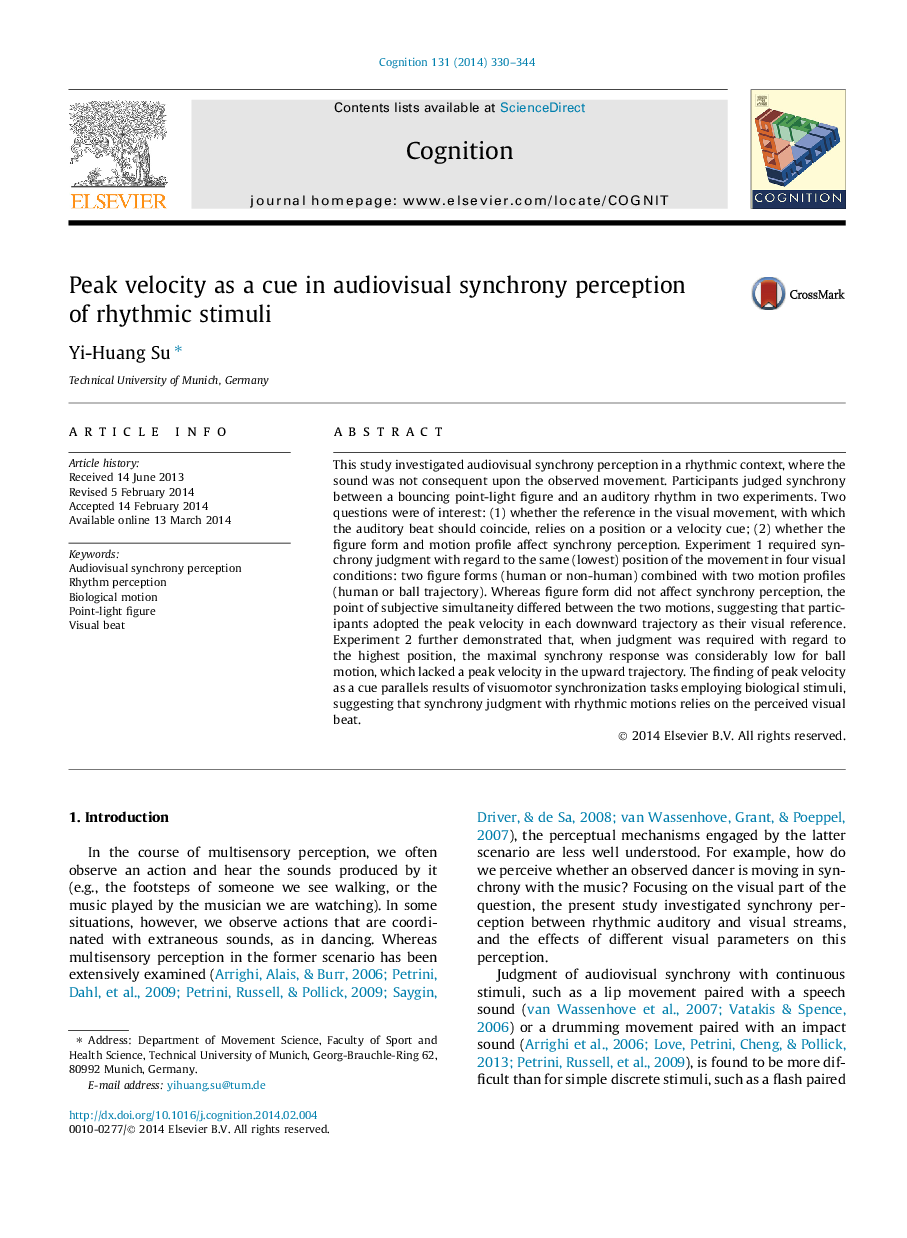| Article ID | Journal | Published Year | Pages | File Type |
|---|---|---|---|---|
| 926697 | Cognition | 2014 | 15 Pages |
•Synchrony was judged between a bouncing point-light figure and an auditory rhythm.•Figure form and motion profile in the visual movement were either humanlike or not.•Figure form did not influence synchrony perception.•Peak velocity in the motion profile influenced point of subjective simultaneity.•The visual velocity cue parallels that for beat perception in visual movement rhythms.
This study investigated audiovisual synchrony perception in a rhythmic context, where the sound was not consequent upon the observed movement. Participants judged synchrony between a bouncing point-light figure and an auditory rhythm in two experiments. Two questions were of interest: (1) whether the reference in the visual movement, with which the auditory beat should coincide, relies on a position or a velocity cue; (2) whether the figure form and motion profile affect synchrony perception. Experiment 1 required synchrony judgment with regard to the same (lowest) position of the movement in four visual conditions: two figure forms (human or non-human) combined with two motion profiles (human or ball trajectory). Whereas figure form did not affect synchrony perception, the point of subjective simultaneity differed between the two motions, suggesting that participants adopted the peak velocity in each downward trajectory as their visual reference. Experiment 2 further demonstrated that, when judgment was required with regard to the highest position, the maximal synchrony response was considerably low for ball motion, which lacked a peak velocity in the upward trajectory. The finding of peak velocity as a cue parallels results of visuomotor synchronization tasks employing biological stimuli, suggesting that synchrony judgment with rhythmic motions relies on the perceived visual beat.
